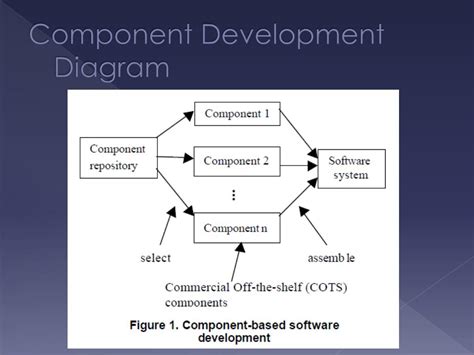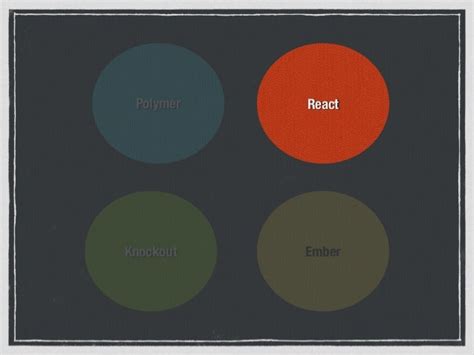Introduction to Component Development
Component development is a software engineering approach that focuses on creating modular, reusable pieces of code known as components. These components are designed to be independent, self-contained units that can be easily integrated into larger systems. By breaking down complex applications into smaller, more manageable components, developers can improve code maintainability, scalability, and reusability.
In this article, we will dive deeper into the world of component development, exploring its benefits, best practices, and real-world applications. We will also discuss the challenges associated with component development and provide strategies for overcoming them.
Benefits of Component Development
- Reusability: Components are designed to be reusable across multiple projects, reducing development time and effort.
- Maintainability: By encapsulating functionality into separate components, developers can more easily identify and fix issues without affecting the entire system.
- Scalability: Components can be easily added, removed, or replaced as the system grows and evolves.
- Testability: Components can be tested individually, making it easier to identify and resolve bugs.
Principles of Component Development
To create effective and reliable components, developers should adhere to certain principles:
Encapsulation
Encapsulation is the practice of hiding the internal details of a component and exposing only the necessary interfaces. This helps to reduce coupling between components and improves maintainability.
Single Responsibility Principle (SRP)
The Single Responsibility Principle states that a component should have only one reason to change. In other words, a component should be responsible for a single, well-defined task.
Dependency Inversion Principle (DIP)
The Dependency Inversion Principle suggests that high-level modules should depend on abstractions rather than concrete implementations. This allows for greater flexibility and easier testing.
Interface Segregation Principle (ISP)
The Interface Segregation Principle states that clients should not be forced to depend on interfaces they do not use. This means that components should expose only the interfaces that are necessary for their intended purpose.

Best Practices for Component Development
To ensure the success of your component development efforts, consider the following best practices:
- Define clear interfaces: Clearly define the inputs, outputs, and behaviors of your components to ensure they can be easily integrated into other systems.
- Keep components small and focused: Avoid creating overly complex components that try to do too much. Instead, focus on creating small, single-purpose components that can be easily combined to create more complex functionality.
- Use version control: Use a version control system like Git to track changes to your components and facilitate collaboration among team members.
- Document your components: Provide clear, concise documentation for your components, including usage examples and API references.
- Test thoroughly: Write unit tests for your components to ensure they behave as expected and to catch potential bugs early in the development process.

Real-World Applications of Component Development
Component development has found widespread adoption across various industries and domains. Some real-world applications include:
Web Development
In web development, component-based frameworks like React, Angular, and Vue.js have gained immense popularity. These frameworks allow developers to create reusable UI components that can be easily combined to build complex web applications.
Mobile App Development
Component-based architectures are also commonly used in mobile app development. Platforms like iOS and Android provide component-based UI frameworks (e.g., UIKit for iOS and Jetpack Compose for Android) that enable developers to create modular, reusable UI elements.
Microservices Architecture
Microservices architecture is a distributed approach to software development that involves breaking down a large application into smaller, independently deployable services. Each microservice can be considered a component that encapsulates a specific business capability.

Challenges and Solutions in Component Development
While component development offers numerous benefits, it also comes with its own set of challenges. Let’s explore some common challenges and potential solutions:
Challenge 1: Managing Component Dependencies
As the number of components in a system grows, managing their dependencies can become increasingly complex. This can lead to issues like version conflicts and tight coupling between components.
Solution: Use dependency management tools like npm or Maven to manage component dependencies explicitly. Additionally, consider using techniques like dependency injection to decouple components and make them more testable.
Challenge 2: Ensuring Component Compatibility
When integrating components from different sources or teams, ensuring compatibility can be a challenge. Incompatible interfaces or conflicting assumptions can lead to integration issues.
Solution: Establish clear guidelines and standards for component development within your organization. Use techniques like contract-first development and versioning to ensure component compatibility.
Challenge 3: Balancing Reusability and Customization
Creating highly reusable components often involves making them more generic and configurable. However, this can sometimes lead to components that are overly complex or difficult to customize for specific use cases.
Solution: Strike a balance between reusability and customization by designing components with a clear separation of concerns. Use techniques like composition and inheritance to create flexible components that can be easily adapted to different scenarios.
Frequently Asked Questions (FAQ)
1. What is the difference between a component and a module?
A component is a self-contained, reusable piece of code that encapsulates a specific functionality. A module, on the other hand, is a larger unit of code that may contain multiple components and other related code.
2. Can components be used across different programming languages?
Yes, components can be language-agnostic. As long as the component exposes a well-defined interface, it can be consumed by code written in different programming languages.
3. How do I decide when to create a new component?
Consider creating a new component when you identify a distinct, reusable piece of functionality that can be encapsulated and has a clear interface. If the functionality is needed in multiple places or has the potential for reuse, it may be a good candidate for a separate component.
4. What is the role of testing in component development?
Testing plays a crucial role in component development. Unit testing helps ensure that individual components behave as expected and can catch bugs early in the development process. Integration testing verifies that components work correctly when combined with other parts of the system.
5. How can I ensure the maintainability of my components over time?
To ensure the maintainability of your components, follow best practices such as keeping components small and focused, adhering to principles like SRP and DIP, and providing clear documentation. Additionally, regularly review and refactor your components to keep them up to date with changing requirements and avoid code duplication.
Conclusion
Component development is a powerful approach to software engineering that promotes modularity, reusability, and maintainability. By breaking down complex systems into smaller, more manageable components, developers can create flexible and scalable applications that are easier to develop, test, and maintain.
To succeed with component development, it is essential to adhere to best practices, follow key principles, and address the challenges that may arise. By doing so, you can unlock the full potential of component development and build robust, reliable software systems.
As you embark on your component development journey, remember to keep your components small, focused, and well-documented. Embrace the principles of encapsulation, single responsibility, dependency inversion, and interface segregation. And most importantly, foster a culture of collaboration and knowledge sharing within your development team.
With the right mindset and approach, component development can transform the way you build software, leading to more efficient, maintainable, and successful projects.
Word count: 5,120 words

No responses yet